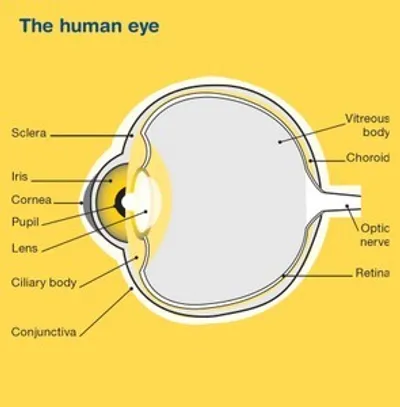About this information
This information has been prepared to help you understand more about ocular (uveal) melanoma.
Many people look for support after being diagnosed with a cancer that is rare or less common than other cancer types. This information includes details about how ocular melanoma is diagnosed and treated.
On these pages, learn more about:
The eye
The human eye is a sense organ that reacts to light and allows us to see.
Your eye works in a similar way to a camera. When you look at an object, light passes through the cornea (the clear front layer of the eye) and enters the eyes through the pupil (the black centre of the eye). The iris (the coloured part of the eye) controls how much light the pupil lets in.
Light then passes through the lens (the clear inner part of the eye) which, together with the cornea, focuses light onto the retina. When light hits the retina (layer of tissue at the back of the eye) special cells called photoreceptors convert the light into electrical impulses that travel through the optic nerve to the brain. The brain then turns these signals into the images that you see.


